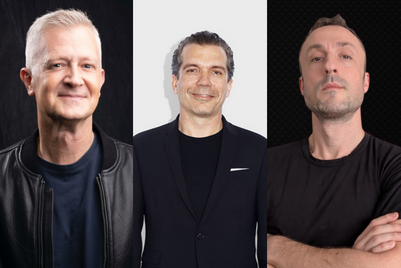
Mobile game Pokémon Go is often thought of as the first mass consumption of augmented reality (AR) technology. Yet many people unsuspectingly use AR on a daily basis with technology they take for granted: social media face filters.
With the popularity of selfies, it’s no surprise that these fun, interactive filters have taken off. But this use of AR isn’t just for entertainment; it’s become a powerful marketing tool for brands.
How augmented reality went mainstream
AR is a live view of the real world which is augmented with a digital input layered over it, such as sound, video, graphics, or GPS data. This is why face filters you find on Facebook, Snapchat, and Instagram are examples of AR.
Snapchat launched their first AR filter with “rainbow barfing” in 2015, inadvertently opening up an entirely new form of marketing.
The average millennial is expected to take 25,700 selfies in his or her lifetime and apps like Snapchat are a big contributor to this number. The fact that the camera is the main communication tool of Snapchat has dramatically altered the way this generation communicates with each other, often preferring sharing photos rather than words. And with the widespread adoption of smartphones with front-facing cameras, this phenomenon is no longer limited to millennials.
How brands use face filters
AR has transformed social media advertising. According to IDC, the number of AR-capable devices in the world is expected to grow to over 4 billion by 2020 and generate over $200 billion in both augmented and virtual reality spending.
In October, Snapchat’s parent company Snap, Inc. introduced a new desktop app called Camera that brings the company’s AR effects to popular video chat apps like YouTube, Skype and Google Hangouts.
Consumers are ready to be reached through AR technology and many big brands have already been leveraging this type of media. Social media face filters are effective because brands are able to reach their target market, without paying for the development of a full-blown app.

Face filters are easy for people to understand because they fit the consumers’ paradigm of social media,” says Amit Chatterjee, partner and co-founder of Shadow Factory—a leading developer of digital content and solutions that produces fully immersive and interactive experiences. The full stack agency is also one of the leading providers in APAC for Facebook filters.
“It’s automatically very accessible to everybody budget-wise, understanding-wise, and creatively.”
While Instagram and Snapchat are more popular amongst Generation Z, Facebook face filters are attractive to marketers as the social media platform offers immediate access to much larger audiences.
The benefits of using face filters for marketing
AR filters are a fun, novel way to engage your customers and can enhance their experience with your brand. The interactivity allows for a deeper, more personal and immersive connection which focuses more on the consumer, rather than the brand.
Because face filters are immersive and personal, it creates a more memorable experience with the brand, increasing loyalty and retention, as well as improving recall of your brand’s story.
To cut through the noise, marketers often have to give consumers something special or extra to get them talking. Another benefit of social media filters is that they are shareable. If done well, the ROI on brand filters can be very high.
“Everyone is sharing [face filters] with their friends and then their friends try it,” says Chatterjee. “These filters often immediately go viral as soon as you release them.”
Selfie culture and face filters are not going anywhere, and are only likely going to continue to flourish. Consumers are excited about this medium—they are curious and eager to try new filters and interact with them. It is important for brands to meet consumers in this space and we’ll only see AR marketing increase in the coming years.




.jpg&h=334&w=500&q=100&v=20250320&c=1)
.jpg&h=334&w=500&q=100&v=20250320&c=1)



.png&h=334&w=500&q=100&v=20250320&c=1)
.png&h=334&w=500&q=100&v=20250320&c=1)

.png&h=268&w=401&q=100&v=20250320&c=1)
.png&h=268&w=401&q=100&v=20250320&c=1)

.jpg&h=268&w=401&q=100&v=20250320&c=1)
.jpg&h=268&w=401&q=100&v=20250320&c=1)


